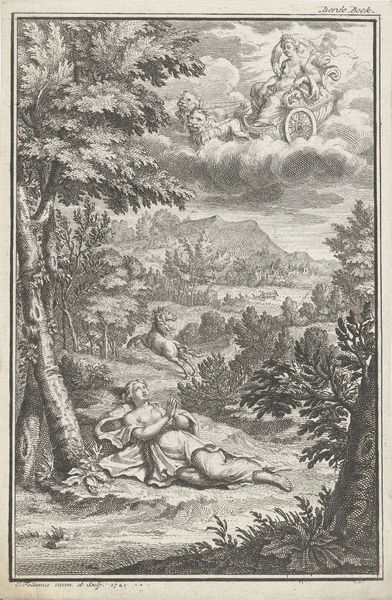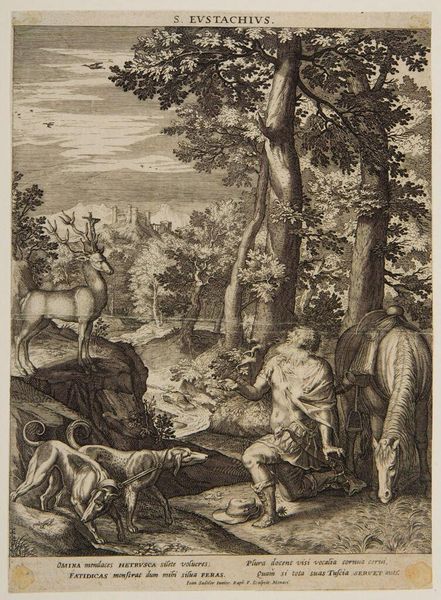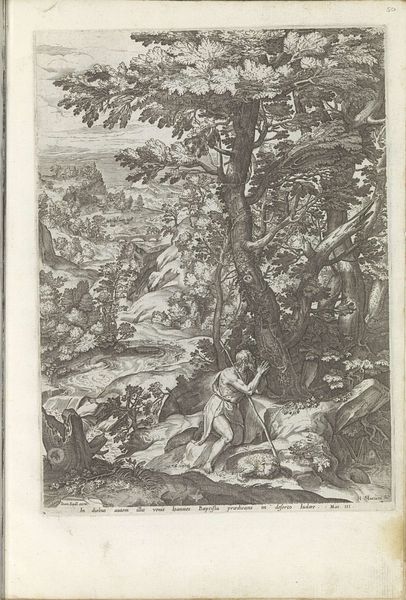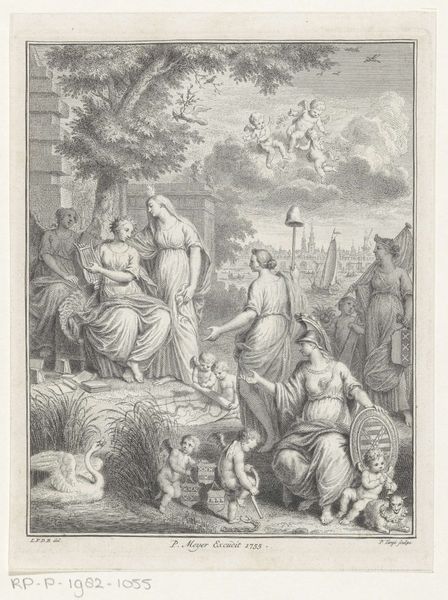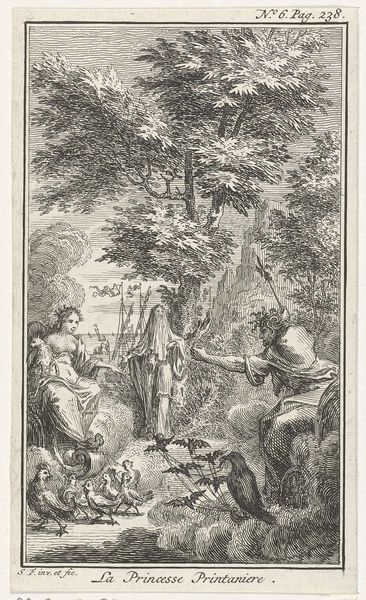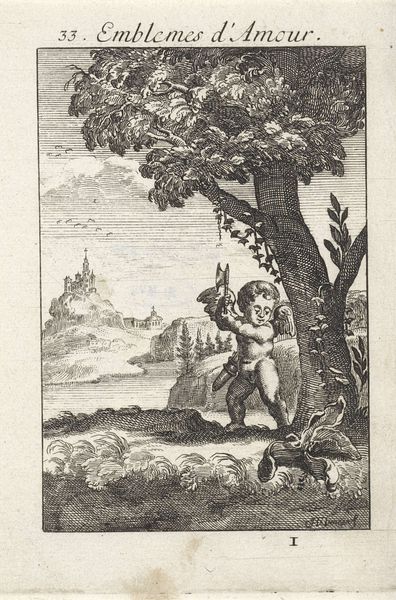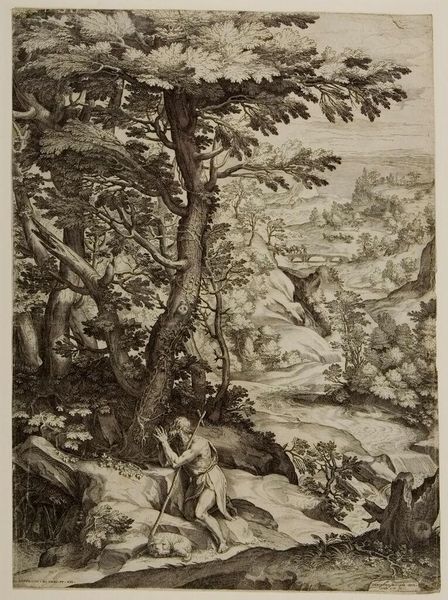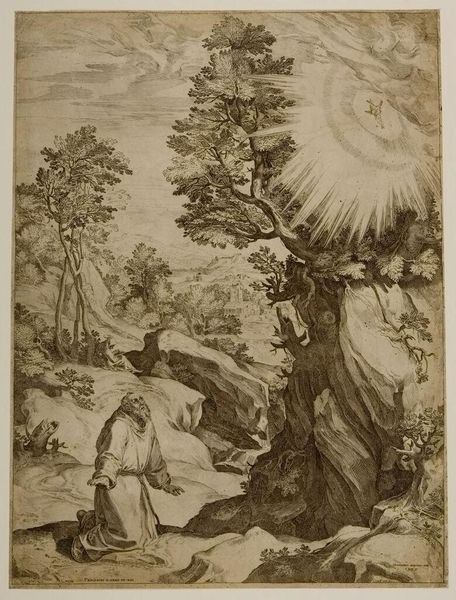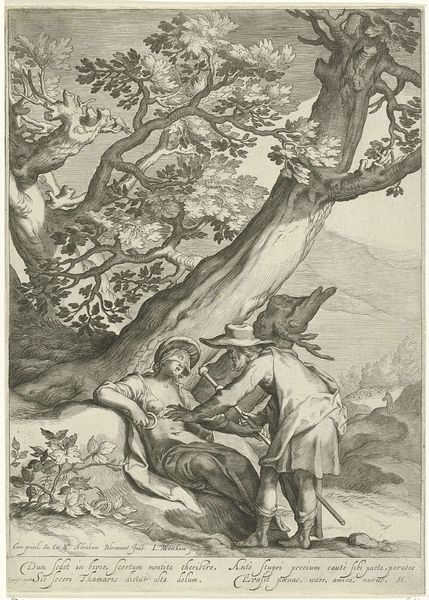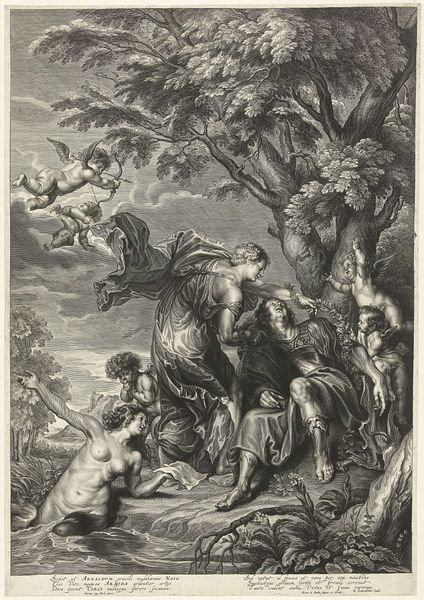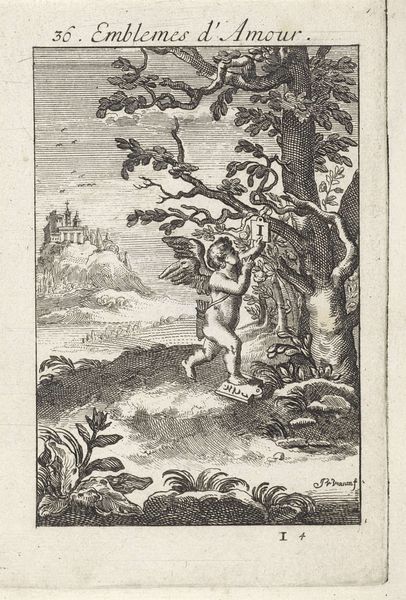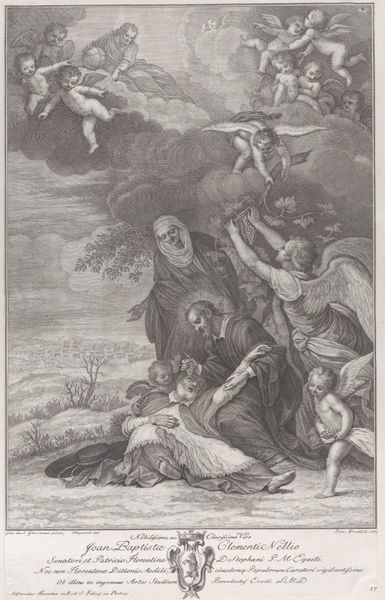
print, engraving
#
pencil drawn
#
narrative-art
#
baroque
#
pen drawing
# print
#
pen sketch
#
old engraving style
#
line
#
history-painting
#
engraving
Dimensions: height 355 mm, width 220 mm
Copyright: Rijks Museum: Open Domain
Editor: This is Andries van Buysen the Elder's "Moses and the Burning Bush," from around 1711. It's an engraving, and the detail is striking! The mood is definitely dramatic, with the intense light around the angel. How do you interpret this work? Curator: I see this engraving as deeply embedded within the socio-political currents of its time. The story of Moses, a figure of liberation, resonates powerfully when considered against the backdrop of 18th-century power structures and the seeds of Enlightenment ideals. Editor: Interesting, could you elaborate on the connection with the Enlightenment? Curator: Certainly. While ostensibly a religious scene, depictions like this one invited viewers to contemplate themes of justice, freedom from oppression, and the questioning of authority. It's not merely a retelling of a biblical narrative but a commentary on power dynamics. What does Moses removing his shoes signify to you? Editor: Respect for divine power, I suppose? Acknowledgment of something greater than himself? Curator: Yes, but let’s also consider how this act might symbolize humility before authority. And then, we have to ask: whose authority? God's? Or any earthly power that claims divine right? The engraving becomes a space for negotiating these complex relationships. Editor: I never considered the potential critique of earthly power... Curator: Exactly! Art doesn't exist in a vacuum. Considering how gender, race and class intersect and inform our reading of visual culture. I encourage viewers to consider whose stories are being told—and whose are being left out. What this engraving does, essentially, is set the stage for conversations around agency. Editor: That’s a totally different way of looking at it. Now I see that the image is less about religious dogma and more about individual conscience in the face of authority. Curator: Precisely. It prompts critical engagement with the viewer's own social context. Hopefully it opens our eyes to new narratives.
Comments
No comments
Be the first to comment and join the conversation on the ultimate creative platform.
